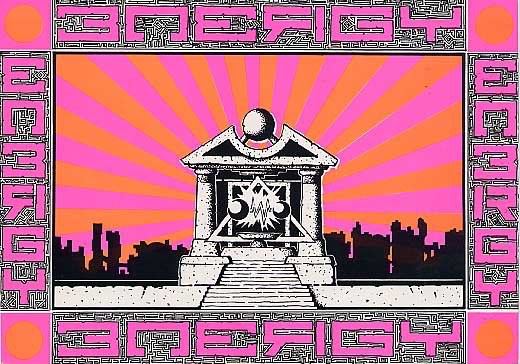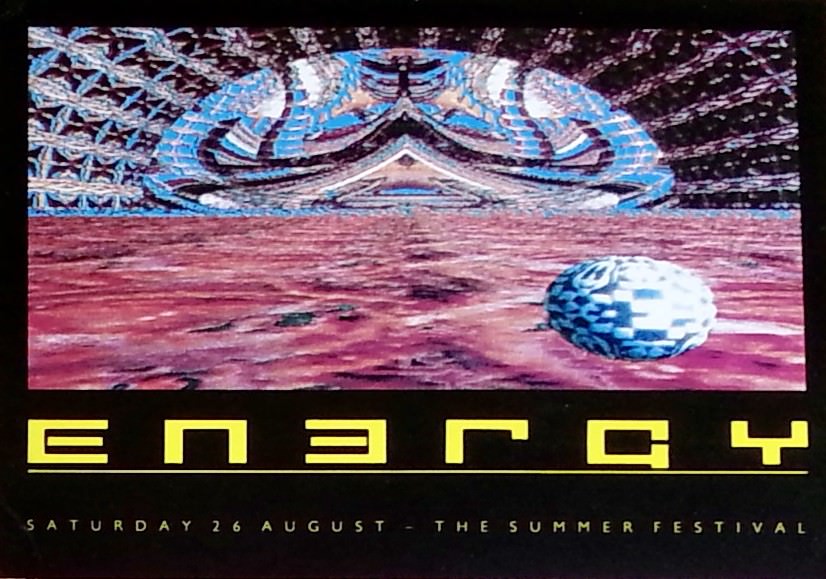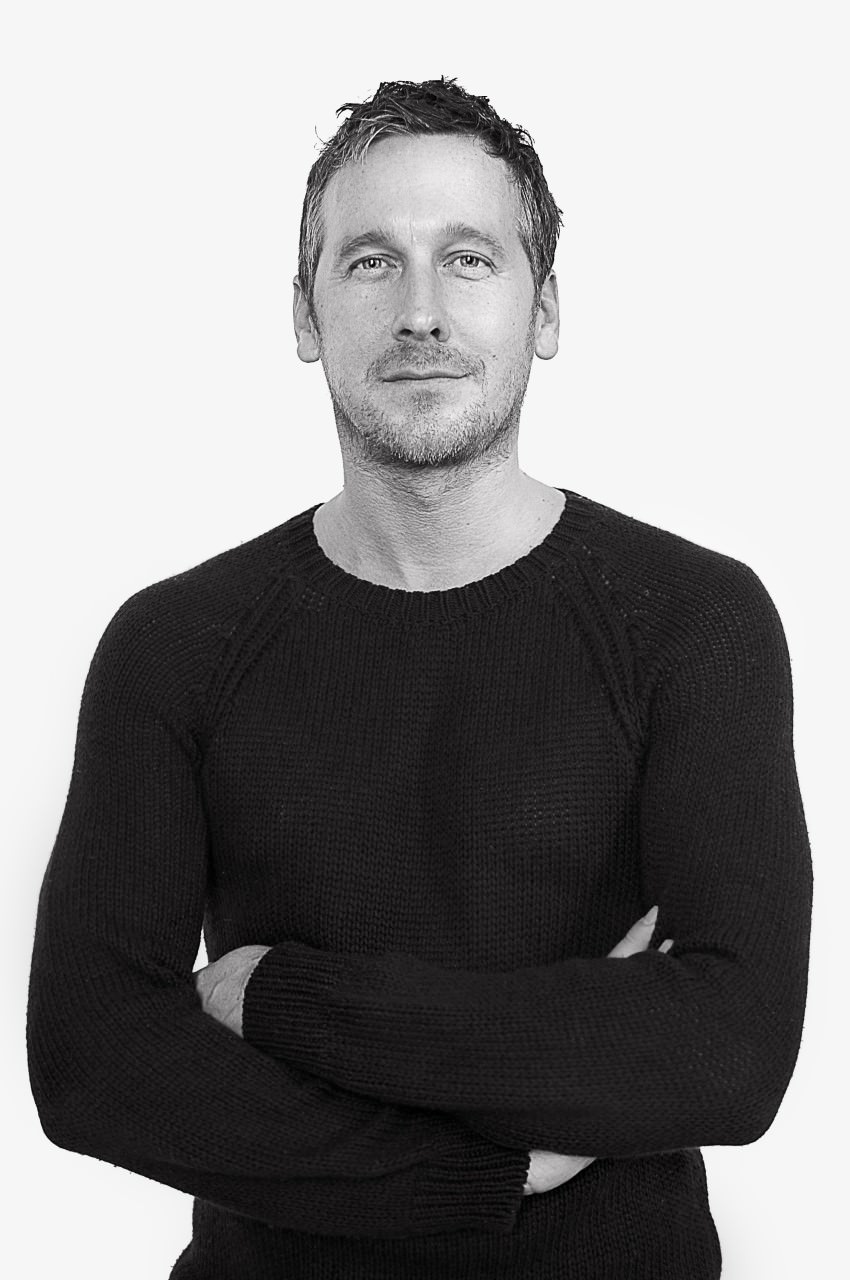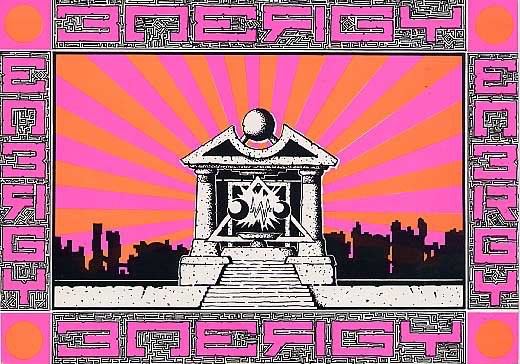32 years ago this week, Quentin ‘Tin Tin’ Chambers, Jeremy Taylor and Anton Le-Pirate put on their infamous rave, ‘Energy’ at the Westway Film Studios in London, an event that has since gone down in rave history. We chatted to Quentin who now owns music and arts platform Openlab about those crazy days of summer 1989.
The first Energy rave in May 1989 was something of a landmark event, simultaneously epitomising the entrepreneurial, freedom-loving, law-avoiding buccaneer spirit of the burgeoning UK rave scene while introducing new previously unseen levels of production. Quentin ‘Tin Tin’ Chambers takes up the story:
Quentin Chambers: The concept for Energy came about after a summer of raving in ’88 and a meeting of minds with my friend Anton Le Pirate. We were extremely passionate about the acid house scene and simply wanted to throw the best event we possibly could. Events that really focussed on an immersive experience. Till that point parties, whilst incredible atmospheric, were fairly minimally produced. Jeremy and I had put on a number of events in 88 and earlier leading up to Energy. Mostly warehouse parties that got raided!

Jeremy, who was an experienced events organiser, found us a super cool three-room film studio in West London, Westway Film Studios (now Westfield!). This was the perfect canvas for realising the vision we had. We had another friend Marc Homes, who just graduated from Camberwell Art School as a stage/set designer. Marc, or Hobs as he is known, was an unbelievable creative and joined Energy as our Creative Director. Together we planned out the concept of building a temple in the middle of the room as the focal point of Energy at the party. This temple (built from film props) was essentially an enormous multi-tiered podium. We painted the entire surrounding walls of the film studio in a futuristic skyline scene. If you look at the flyer, we basically re-created that almost exactly. That was just the main room. In the second room we built a more detailed version of the futuristic skyline, basically taking inspiration from Blade Runner. The 3rd room we built a Pyramid using mesh and projection-mapped it.
We were all living this hedonistic life 24/7. You would emerge from one party, and head into another. We didn’t sleep for days…
The party itself was incredible. No one had been to anything like it. The production was so strong it pretty much blew people’s minds. And of course this was May 1989, with this party being the next big step up in event scale in advance of the huge raves of the summer of 89. The scene was exploding around then – we had 6,000 inside, and the same outside trying to get in. Cars were crushed on the street outside as people tried to clamber over the walls; it was some scene…

Attack Magazine: It was an illegal party right? How did you get away with it?
So, the thing was back then, there was a law that stated if you were a private members club, you did not need an entertainment license. We actually gave membership out with the tickets and kept a record of all our members. At one point we had 100,000 members. Not only did this provide legal cover for us (even going into the massive 25,000 people parties we did later in the summer), but it also allowed us to market directly via a mail list (actual mail ha ha). In all our events we had a lawyer on site to deal with the police (who always wanted to shut us down). The real trick to getting your party off the ground was to keep the venue secret till the evening. We organised for our agents to meet groups at meeting points and we also used phone lines to give out info on the venue last minute. Once you had enough people inside, the police would have to let the event go on.
Attack Magazine: It was Oakenfold’s Spectrum that turned you on to the acid house movement, is that correct?
Spectrum was the first weekly event that I went to religiously. Although my first true acid house experience was at Hedonism in West London in Feb ’88 I think. I was very much a clubber before that too, intro electro and northern soul, being a regular at places like Mud Club, WAG, Limelite, Delirium and Embassy. London clubs pre acid house, and on the cusp were phenomenal. That was a great time to be alive.

Can you tell us a bit more about what London’s club/dance/rave scene was like in 1988?
It was incredible. Life-changing. The scene was so small, maybe just a few thousand people at the beginning in London, all going to the same places night after night. If you spotted a fellow raver on the street in their Mambo’s, there was a connection. You might end up going back to their house to listen to records or end up with them still a week later after 5 parties. I would be out every night! Mixing with like-minded people from all backgrounds, getting on, dancing, being crazy, loving each other. This was so new, we were so free. The parties themselves were raw, the music infectious, authentic. It was like nothing that had happened before in a real sense. We all felt part of something big but it was lighthearted. I was a kid, and we behaved like kids.
You say you had a sense that you were part of something bigger…
Yes, but I had no idea 33 years later this culture would still be here.
Can you remember any particular stand out moments from the Westway party?
Adamski Live. I was on the enormous 20ft high scaffolding stage with him, the thing wobbling like mad, with a laser piercing the back of our head, just looking out at the sea of people with their hands up and faces in ecstasy. And then turning around to see my partner Anton, facing the other way, head in the massive laser at almost point-blank range with his arms outstretched like Jesus on the cross… that’s etched on my brain forever, and probably the laser in his too.
For some younger folk, it’s hard to imagine how revolutionary this all felt at the time – can you talk a little about the experience, what it felt like to be organising these events?
Obviously being part of a scene like the 88/89 acid/rave movement was something incredibly special and privileged. It felt amazing. And of course when you are promoting you are right at the centre of everything. You live and breathe it. You are connected. And back then there were just a few of us doing this, so we all paired together and collaborated often, we were all on the same mission. And we were all living this hedonistic life 24/7. You would emerge from one party, and head into another. We didn’t sleep for days. I made some amazing and lasting friendships, but also those connections with strangers for one night that I also never forget. This is of course not limited to this period, that’s one of the legacies of this scene, it created a platform that’s still very meaningful today. Of course, I was just 19 when I started Energy, and 18 when I started promoting… I’m not sure whether I would have the balls or the energy to do what I did then at the stage of my life I am now. I’m excited for what’s coming next.
And because the most important thing when organising a party is to keep the police out, we went through incredibly elaborate operations and tactics to keep things secret.
You had some ups and downs with your parties that summer, tell us a bit about dealing with the police and the authorities.
Oh man, how long have you got? Obviously what we were doing was fairly anti-establishment, not on purpose, but in the way that we were just wanting to be free, to party and we didn’t give much of a shit about law and order. We were the future. By the end of 1988, Thames Valley Police had set up the ‘Pay Party Unit’, which grew to 40 officers by the summer. Of course being one of the biggest organisations, we were very much under surveillance. And because the most important thing when organising a party is to keep the police out, we went through incredibly elaborate operations and tactics to keep things secret. You may have read about us sending dummy decoy production trucks out in advance of the real ones, and seeing those be followed off, whilst we sent the real ones in another direction. You have the incidents where the police set up roadblocks on one of our parties just by the M4. Ravers simply parked on the motorway hard shoulder and ran across 6 lanes into the event. We closed Heathrow for 6 hours. So we weren’t that popular and we were arrested many times, once in a 2CV with a smily face sticker on the back 😉
Looking back, how do you feel about your time as a rave promoter?
It was amazing at the beginning, I look back at Energy and am really proud of what we did. It still means a lot to many people and to have contributed to this amazing culture that’s still prevalent 33 years on is something to cherish. It got less fun and far less rewarding later.. but that’s another story.
What were some of the big tunes that summer?
- Sueno Latino – Sueno Latino
- Richie Rich – Salsa House
- Fallout – The Morning After
- Stacker – Humanoid
- KLF – What Time Is Love
- Nightwriters – Let The Music Use You
- Lil Louis – French Kiss
- Rhythim is Rhythim – Strings of Life
- Charles B – Lack of Love
- Renegade Soundwave – Phantom
- Two Without Hats – Try Yazz
- Sandee – Notice Me
- Neal Howard – Indulge
So tell us briefly about what you’ve been up to in the last three decades!
So, after hanging up my promoter hat, I went on to DJ successfully for many years. I produced some records under Cleptomaniacs (Positive Feedback), ran some record labels and generally lost my way a little till the late 90’s when I was asked to help build an early .com company Groovetech. This project really reignited my enthusiasm for building a business within music. Whilst very different to what I had done before, the internet was proving a new frontier for creativity, and especially for access. It really did democratise that. Groovetech were super early, pretty much the first online radio for electronic music, broadcasting and a store. It was the first true Electronic Music brand. From there I went on to work within the emerging digital music space, where I have been ever since, with 25 years of experience behind me in online music and platforms.
And you run OpenLab now, which seems a million miles from acid house, but maybe it isnt...
That’s right and no, it’s just an extension of what I’ve always wanted to do. Build great experiences around music, especially where people discover. I fell in love with OpenLab when working on it with the late, great Robert Miles. It was so far ahead of any other curated platform on the music side, so beautifully done, supporting amazing and progressive artists from music and art. And so after Robert tragically died in the middle of this journey, I decided OpenLab had to continue. So I took it on and relaunched it in 2019. Our roots and our FM station are in Ibiza (106.4FM), but we are building a strong global community. We showcase very high quality, upfront electronic and alternative music as well as innovative visual art, architecture and design. We have some really exciting expansion plans, maybe something for another chat down the road.
You currently have an ad blocker installed
Attack Magazine is funded by advertising revenue. To help support our original content, please consider whitelisting Attack in your ad blocker software.
x
